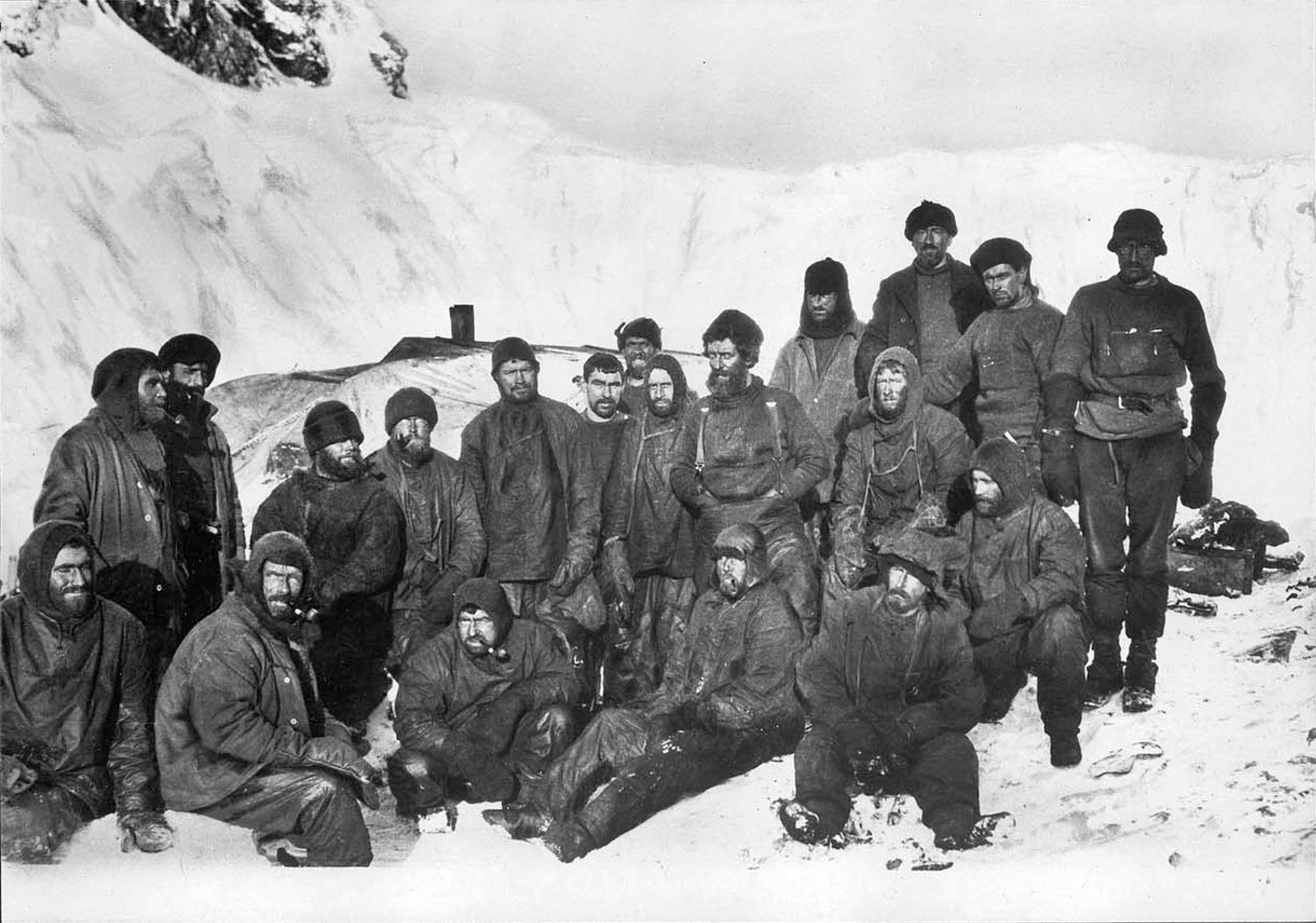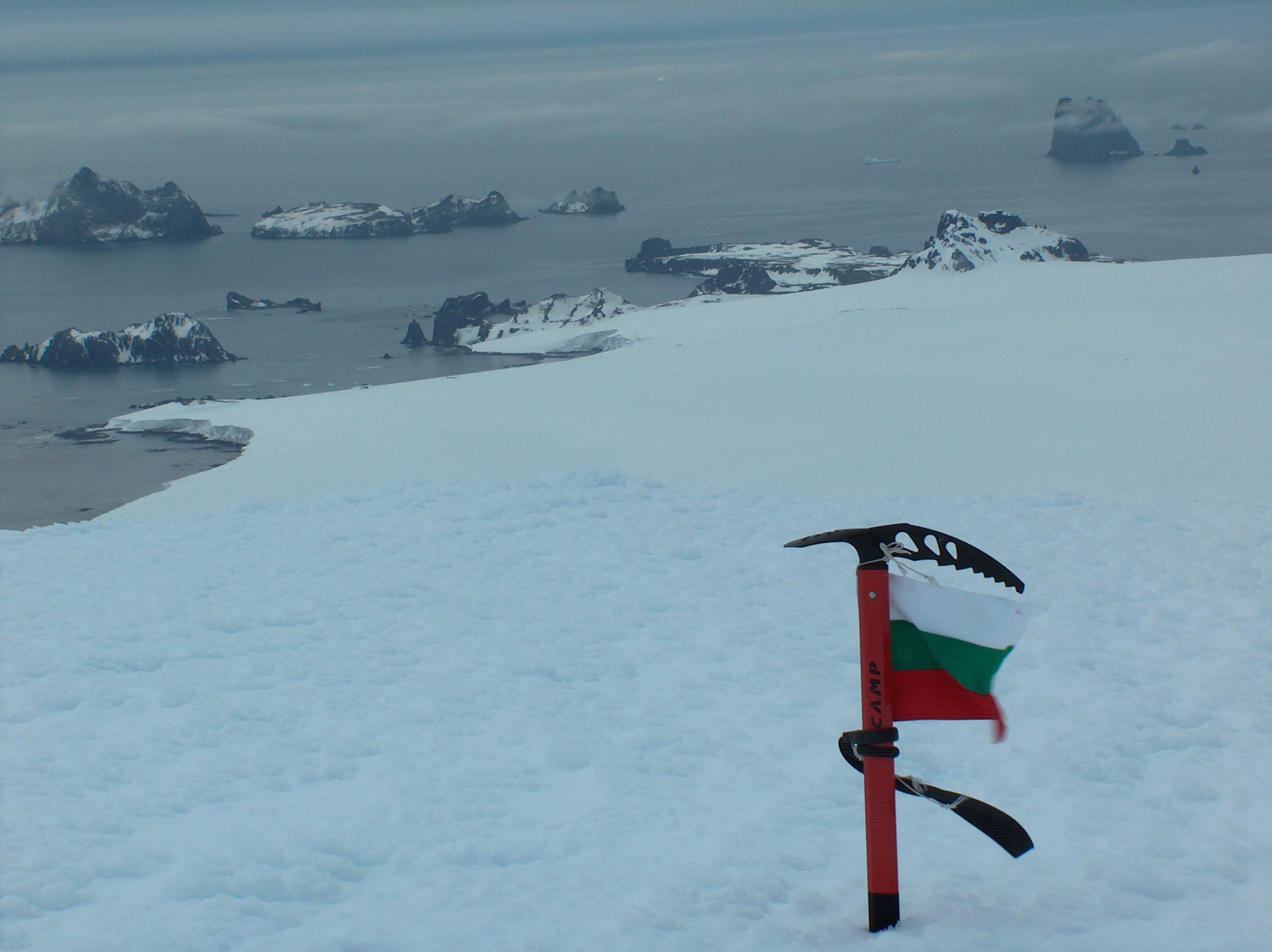|
Elephant Island
Elephant Island is an ice-covered, mountainous island off the coast of Antarctica in the outer reaches of the South Shetland Islands, in the Southern Ocean. The island is situated north-northeast of the tip of the Antarctic Peninsula, west-southwest of South Georgia, south of the Falkland Islands, and southeast of Cape Horn. It is within the Antarctic claims of Argentina, Chile and the United Kingdom. The Brazilian Antarctic Program maintains a shelter on the island, Goeldi, and formerly had another ( Wiltgen) supporting the work of up to six researchers each during the summer. Wiltgen was dismantled in the summers of 1997 and 1998. Toponym Elephant Island's name is attributed to both its elephant head-like appearance and the sighting of elephant seals by Captain George Powell in 1821, one of the earliest sightings. In Russia, it is still known by the name given by its discoverers in 1821 – Mordvinov Island. Geography Elephant Island marks the western end of the So ... [...More Info...] [...Related Items...] OR: [Wikipedia] [Google] [Baidu] |
South Shetland Islands
The South Shetland Islands are a group of List of Antarctic and subantarctic islands, Antarctic islands located in the Drake Passage with a total area of . They lie about north of the Antarctic Peninsula, and between southwest of the nearest point of the South Orkney Islands. By the Antarctic Treaty System, Antarctic Treaty of 1959, the islands' sovereignty is neither recognized nor disputed by the signatories. According to British government language on the topic, "the whole of Antarctica is protected in the interests of peace and science." The islands have been claimed by three countries, beginning with the United Kingdom since 1908 (since 1962 as part of the equally unrecognized British Antarctic Territory). The islands are also claimed by the governments of Chile (since 1940, as part of the Antártica Chilena province), and by Argentina (since 1943, as part of Argentine Antarctica, Tierra del Fuego Province, Argentina, Tierra del Fuego Province). Several countries ... [...More Info...] [...Related Items...] OR: [Wikipedia] [Google] [Baidu] |
George Powell (mariner)
George Powell (1794–1824) was an English sealer, explorer and amateur naturalist. He captained three sealing expeditions to the Antarctic Ocean between 1818 and 1822. Powell was born in London. During his first expedition, in 1818 and 1819, he captained the sloop ''Dove'' and visited South Georgia and Kerguelen Islands. His second expedition, captaining ''Eliza'', lasted from 1819 until 1821, during which time he visited the Falkland Islands and the South Shetland Islands. In 1821 and 1822 he took both ''Dove'', which he captained, and ''Eliza'', captained by John Wright, on another sealing expedition to the South Shetland Islands, for which he produced a very fine chartL. Ivanov and N. Ivanova. Sealing period. In''The World of Antarctica''.Generis Publishing, 2022. pp. 78-84. based on his own observations of the north coast of the group and the observations of others for the southern coast. On 6 December 1821, he co-discovered the South Orkney Islands along with American ... [...More Info...] [...Related Items...] OR: [Wikipedia] [Google] [Baidu] |
Accretionary Wedge
An accretionary wedge or accretionary prism forms from sediments accreted onto the non- subducting tectonic plate at a convergent plate boundary. Most of the material in the accretionary wedge consists of marine sediments scraped off from the downgoing slab of oceanic crust, but in some cases the wedge includes the erosional products of volcanic island arcs formed on the overriding plate. An accretionary complex is a current (in modern use) or former accretionary wedge. Accretionary complexes are typically made up of a mix of turbidites of terrestrial material, basalts from the ocean floor, and pelagic and hemipelagic sediments. For example, most of the geological basement of Japan is made up of accretionary complexes. Materials within an accretionary wedge Accretionary wedges and accreted terranes are not equivalent to tectonic plates, but rather are associated with tectonic plates and accrete as a result of tectonic collision. Materials incorporated in accretionary wedge ... [...More Info...] [...Related Items...] OR: [Wikipedia] [Google] [Baidu] |
Greenschist
Greenschists are metamorphic rocks that formed under the lowest temperatures and pressures usually produced by regional metamorphism, typically and 2–10 kilobars (). Greenschists commonly have an abundance of green minerals such as Chlorite group, chlorite, Serpentine subgroup, serpentine, and epidote, and :wikt:platy, platy minerals such as muscovite and platy serpentine. The platiness gives the rock schistosity (a tendency to split into layers). Other common minerals include quartz, orthoclase, talc, carbonate minerals and amphibole (actinolite). Greenschist is a general field petrology, petrologic term for metamorphic rocks, metamorphic or altered mafic volcanic rock. In Europe, the term ''prasinite'' is sometimes used. A ''greenstone'' is sometimes a greenschist but can also be rock types without any schistosity, especially metabasalt (spilite). However, basalts may remain quite black if primary pyroxene does not revert to chlorite or actinolite. To qualify for the name, ... [...More Info...] [...Related Items...] OR: [Wikipedia] [Google] [Baidu] |
Blueschist
Blueschist (), also called glaucophane schist, is a metavolcanic rock that forms by the metamorphism of basalt and similar rocks at relatively low temperatures () but very high overburden pressure, pressure corresponding to a depth of . The blue color of the rock comes from the presence of the predominant minerals glaucophane and lawsonite. This combination of low temperature occurring at significant depth can only be explained in the context of plate subduction, followed by exhumation (geology), exhumation, which accounts for the rarity of this rock. Blueschists are schists typically found within orogeny, orogenic belts as terranes of lithology in fault (geology), faulted contact with greenschist or rarely eclogite facies rocks. Petrology Blueschist, as a rock type, is defined by the presence of the minerals glaucophane + ( lawsonite or epidote ) +/- jadeite +/- albite or Chlorite group, chlorite +/- garnet +/- white mica, muscovite in a rock of roughly basaltic composition ... [...More Info...] [...Related Items...] OR: [Wikipedia] [Google] [Baidu] |
Phyllite
Phyllite ( ) is a type of foliation (geology), foliated metamorphic rock formed from slate that is further metamorphosed so that very fine grained white mica achieves a preferred orientation.Stephen Marshak ''Essentials of Geology'', 3rd ed. It is primarily composed of quartz, sericite mica, and chlorite group, chlorite. Phyllite has fine-grained mica flakes, whereas slate has extremely fine mica flakes, and schist has large mica flakes, all mica flakes of which have achieved a preferred orientation. Among foliated metamorphic rocks, it represents a gradation in the degree of metamorphism between slate and schist. The minute crystals of graphite, sericite, or chlorite, or the translucent fine-grained white mica, impart a silky, sometimes golden sheen to the surfaces of cleavage (geology), cleavage, called "phyllitic luster". The word comes from the Greek ''phyllon'', meaning "leaf". The protolith (or parent rock) for phyllite is shale or pelite; or slate, which in turn came ... [...More Info...] [...Related Items...] OR: [Wikipedia] [Google] [Baidu] |
Cretaceous
The Cretaceous ( ) is a geological period that lasted from about 143.1 to 66 mya (unit), million years ago (Mya). It is the third and final period of the Mesozoic Era (geology), Era, as well as the longest. At around 77.1 million years, it is the ninth and longest geological period of the entire Phanerozoic. The name is derived from the Latin , 'chalk', which is abundant in the latter half of the period. It is usually abbreviated K, for its German translation . The Cretaceous was a period with a relatively warm climate, resulting in high Sea level#Local and eustatic, eustatic sea levels that created numerous shallow Inland sea (geology), inland seas. These oceans and seas were populated with now-extinct marine reptiles, ammonites, and rudists, while dinosaurs continued to dominate on land. The world was largely ice-free, although there is some evidence of brief periods of glaciation during the cooler first half, and forests extended to the poles. Many of the dominant taxonomic gr ... [...More Info...] [...Related Items...] OR: [Wikipedia] [Google] [Baidu] |
Endurance Glacier
Endurance Glacier is a broad glacier north of Mount Elder, draining south-east to the south coast of Elephant Island in the South Shetland Islands of Antarctica, and is the main discharge glacier on the island. It was named by the UK Antarctic Place-Names Committee after HMS ''Endurance'' (Captain P.W. Buchanan, Royal Navy), which anchored off the glacier on several occasions in support of the Joint Services Expedition to Elephant Island, 1970–71. See also * List of glaciers in the Antarctic * Glaciology Glaciology (; ) is the scientific study of glaciers, or, more generally, ice and natural phenomena that involve ice. Glaciology is an interdisciplinary Earth science that integrates geophysics, geology, physical geography, geomorphology, clim ... References Glaciers of Elephant Island Elephant Island {{SouthShetlands-glacier-stub ... [...More Info...] [...Related Items...] OR: [Wikipedia] [Google] [Baidu] |
Point Wild
Point Wild is a point west of Cape Valentine, east of Saddleback Point, and directly adjacent to the Furness Glacier on the north coast of Elephant Island. It was named "Cape Wild" by the Shackleton Endurance expedition 1914–16, but Point Wild is recommended for this feature because of its small size and to avoid confusion with Cape Wild on George V Coast. It was named for Frank Wild, leader of the party from Shackleton's shipwrecked expedition which camped and managed to survive on the point for four and a half months until they were rescued on 30 August 1916. Historic site A bust of Captain Luis Alberto Pardo, with a monolith and plaques, has been placed at the point to celebrate the rescue of the survivors of the ''Endurance'' by the ''Yelcho''. The inscription reads: Here on August 30th, 1916, the Chilean Navy cutter ''Yelcho'' commanded by Pilot Luis Pardo Villalón rescued the 22 men from the Shackleton Expedition who survived the wreck of the ''Endurance'' li ... [...More Info...] [...Related Items...] OR: [Wikipedia] [Google] [Baidu] |
Cape Lookout (South Shetland Islands)
Cape Lookout, also known as Cabo Fossatti or Cabo Vigia, is a steep cape, 240 m high, marking the southern extremity of Elephant Island in the South Shetland Islands of Antarctica. The name Cape Lookout appears on a map of 1822 by captain (nautical), Captain George Powell (mariner), George Powell, a United Kingdom, British Seal hunting, sealer, and is now established in international usage. Important Bird Area The site has been identified as an Important Bird Area (IBA) by BirdLife International because it supports a large bird colony, breeding colony of about 12,000 pairs of chinstrap penguins. References Important Bird Areas of Antarctica Penguin colonies Headlands of the South Shetland Islands, Lookout Elephant Island {{ElephantIsland-geo-stub ... [...More Info...] [...Related Items...] OR: [Wikipedia] [Google] [Baidu] |






